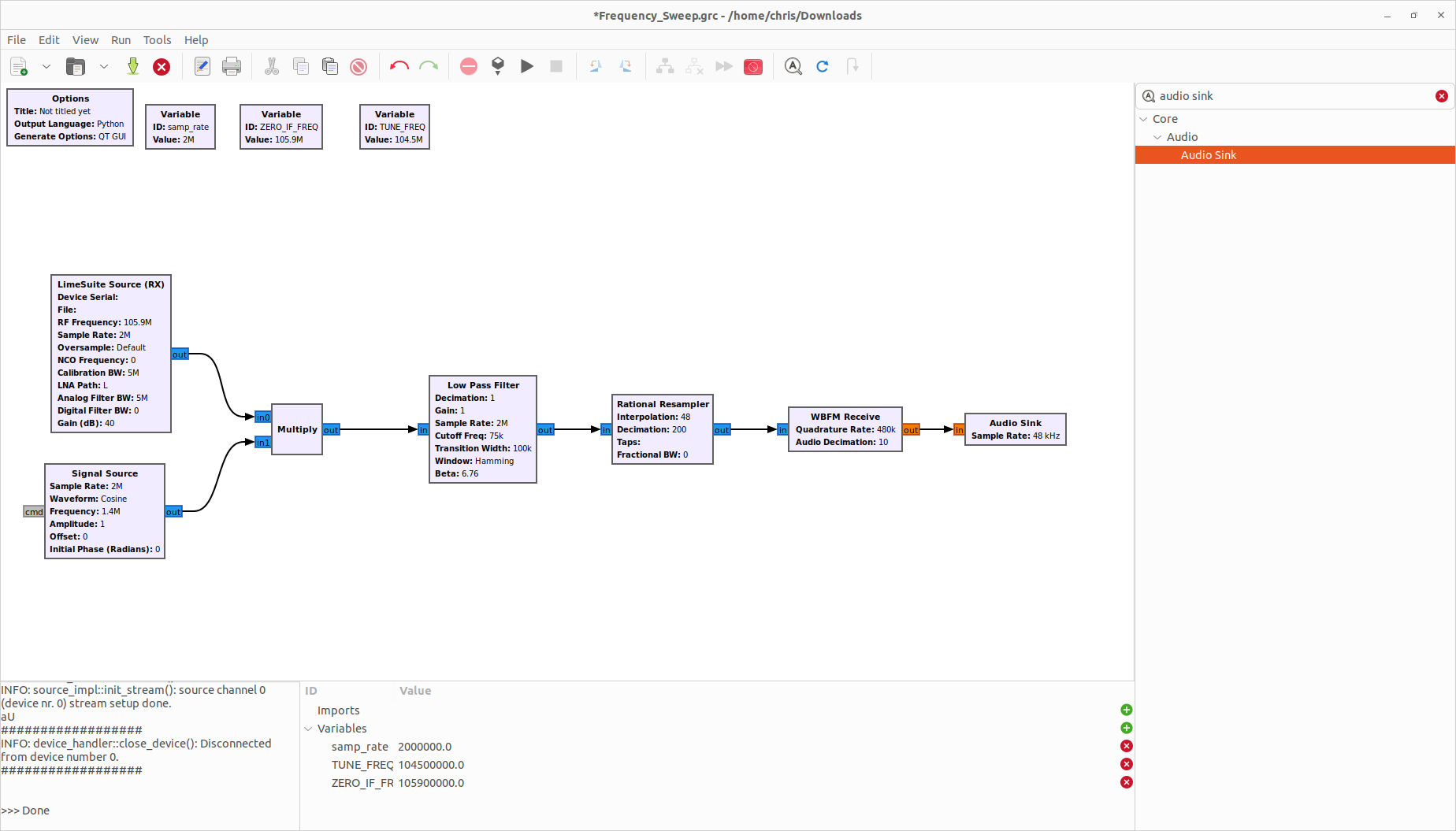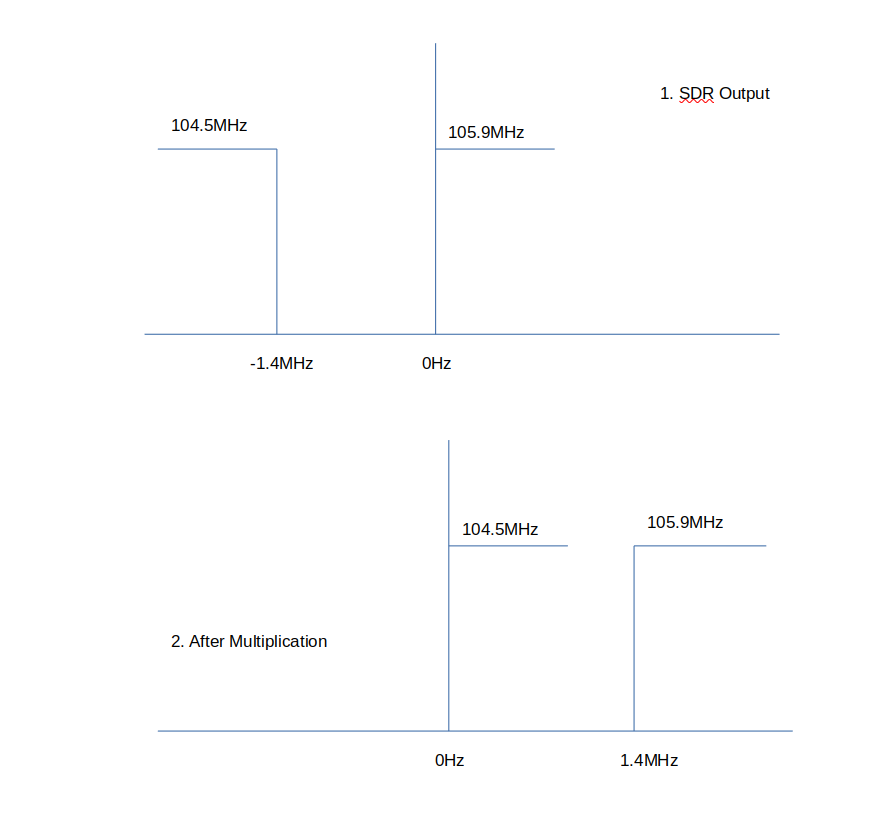Hope y'all are doing well. Recently I've picked up a LimeSDR and interfacing it with GNURadio and been having a blast with it. I got my first FM receiever demo working using examples from LimeSDR FM Example (Simple)
My next step was to make it variable, as the Simple FM receiver demo was fixated on one frequency. I followed this next video Variable FM Receiever Demo starts at 20:37. In the video he takes his SDR source and a signal source (both in complex) and multiplies it resulting in a frequency shift then he just made the signal source into a slider and, viola!
I tried doing the same but had broken it down first to where he had his SDR Source multiplied by a signal source. I wanted to see if I could get that working if so i can just put on a slider then.
Here is my GNURadio Block Diagram:

For the first test I wanted the target output frequency to be tuned for 104.5MHz
So to test my theory I set my SDR Source LO frquency for 105.9MHz and multiply it at 1.4MHz to shift upwards so that the new centre frequency can become 104.5MHz, however after a long debug session I was tuning into 106.5MHz somehow!?
Here is a further look into what I thought what should had happened in terms of a FFT:

In theory it should have shifted my -1.4MHz into the centre frequency but I am stumped as to why it doesnt.
I am not a RF wizard all this for fun and I was hoping if someone can fill in the gaps here that I cant see would be amazingly appreciated.
